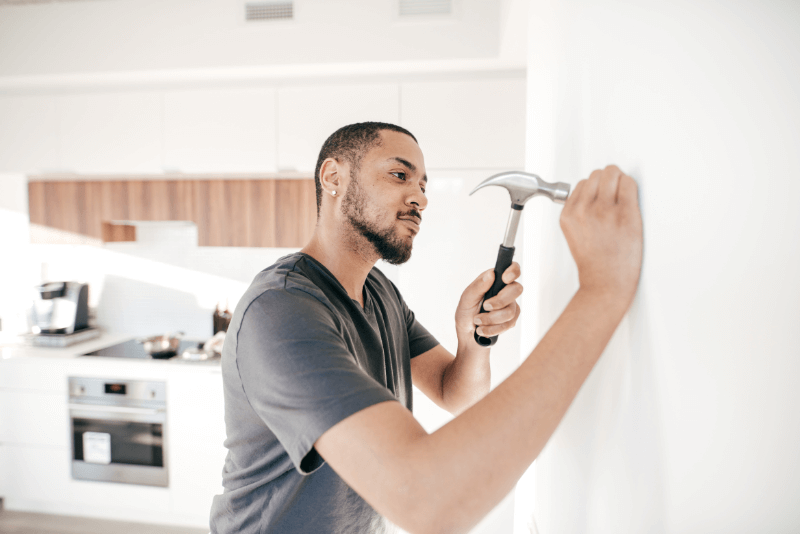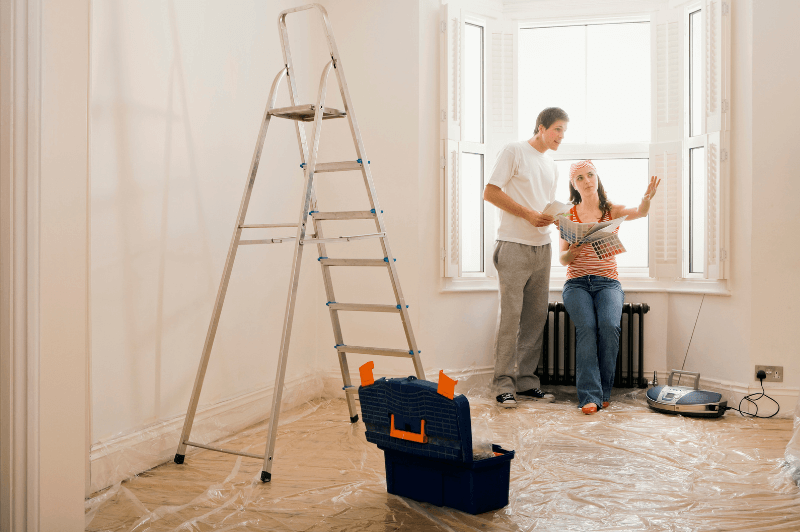
If you’re purchasing or selling a home, you’ll probably hear the phrase “lender-required repairs.” But do you know what it means and how it affects your home purchasing or the process of selling a house?
Well, most homes could be better when listing. If there are only minor defects, such as a faulty water heater, some home buyers might overlook them when buying a property.
However, some lenders, such as the U.S. Federal Housing Administration (FHA) and the U.S. Department of Veterans Affairs (VA), have lender requirements that demand these repairs before committing to financing the buyer’s loan.
For this reason, it’s important to understand what lender-required repairs are to avoid any hitches in your home purchase or sale. This post will bring you up to speed with what they are and what to expect.
We’ll also look into an alternative that can help you to avoid this requirement entirely. So, without further ado, let’s get started!
About Lender-Required Repairs
VA loans and FHA loans have minimum habitability rules for traditional mortgages. Simply put, they’ll only finance loans for homes that the borrower can immediately move into. Conversely, hard money lenders approve loans for damaged houses that require extensive renovations.
Because of this habitability requirement, lenders frequently insist that specific repairs be completed before issuing a particular type of loan.
Credit unions, banks, and other traditional lenders don’t physically inspect houses. They do, however, demand home appraisals. Whereas an appraisal isn’t the same as a home inspection, appraisal reports identify major property defects, be it a leaking roof, faulty wiring, plumbing issues, etc.
Besides, if a home has had significant renovations, this can be a reason for concern in the home appraisal. Lenders will request proof that these renovations received proper permitting to ensure the house was renovated to quality standards.
If the lender reviews these appraisal reports and identifies some key areas of concern, they’ll include a provision to the loan closing. Before financing your mortgage, these appraisal-required repairs must be completed. If not, you’ll not get approval for the loan.
Examples of Lender-Required Repairs
The kind of repairs a lender might request vary based on several factors, including the type and size of the loan, the lender’s business criteria, and the general state of the home in question. Nonetheless, here are some of the most common lender-required repairs:
Building Code Regulations
Building codes are a set of minimum requirements that buildings must conform to when designing and constructing a property. Lenders are strict with these regulations to avoid foreclosing on a property, only to deal with state and local governments later.
Structural Repairs
Structural repairs are repairs to your house’s roof, foundation, and framing. You’ll hardly get a loan approval if your home has structural red flags, be it a rusty, leaking roof, peeling paint, damaged handrails, and/or a weak foundation.
Mechanical System Repairs
Appraiser will highlight major issues regarding electrical, plumbing, and HVAC (air conditioning, heating, and ventilation). These systems should be in proper working condition, or you might have to repair them before the lender secures you (the buyer) with a mortgage loan.
Any loose cables should be clipped or safely capped. Likewise, any old pipes should be replaced, leakages fixed, etc.
Fire Safety Repairs
Lenders might require repairs against any fire hazards or safety requirements to guarantee the safety of the property. This can include anything from carbon monoxide detectors to installing a home with a functional fire extinguisher.
Lender-required repairs go beyond what we’ve covered here and, in principle, can include any fixes the lender deems fit. Remember, the lender’s objective is to obtain a good return on their investment and ensure that the collateral property retains a good market value.
What To Do When a Lender Requires Repairs
Once a lender demands certain repairs as a condition for approving your loan, here are some steps you should take to tackle the issue.
Check the Lender’s Requirements
Understand the necessary repairs your lender wants to be done, and check the lender requirements if any deadlines are set for completing them. If there’s any clarification you want from your lender, inquire.
Assess the Feasibility and Cost
Find an experienced contractor or relevant professional to help you determine the costs involved. Assess whether this cost is reasonable and falls under your budget.
Negotiate With Your Lender
If you think certain repairs are unnecessary as they do not affect the soundness of the house, you can talk to your lender about it. To be more convincing, you can develop some backing or alternative solutions that address your lender’s worries whilst being more cost-efficient.
Establish Responsibility
Should the buyer or seller cover the cost of the lender-required repairs? Anybody can pay, so it’s up to you to have a sit-down.
Begin by assessing the market conditions to determine if it favors buyers or sellers when entering negotiations. Whatever option you pick, ensure it satisfies both parties.
Plan for Repairs
Create a schedule for these repairs. Ensure you have the necessary funding, and only choose knowledgeable professionals to perform these repairs. Numerous contracting companies offer free cost estimates, so try and source one with the best services and financing options.
Record the Repairs
Document these repairs by keeping a paper trail of all invoices, receipts, and other necessary paperwork, such as permits. You’ll present this documentation to your lender as proof of completion of the repairs.
Follow Up With Your Lender
After you finish all the necessary repairs, it’s time to revive talks with your lender on closing your loan. If you’ve honored your bargain, your lender will finance your loan.

Avoiding Lender-Required Repairs
If you’re buying a property, the most recommendable way of avoiding lender-required repairs is to hire a professional home inspector to perform a comprehensive inspection of the property’s condition beforehand.
This inspection gives you a glimpse of potential issues that could call for a lender repair requirement. You can now use this information to negotiate with the seller to make the necessary repairs before closing the property.
However, if you’re selling a home, you may avoid lender-required repairs by ensuring that your home is in great condition before listing it. Fix all issues, regardless of how mild they might seem. Remember, even something seemingly trivial as a leaking faucet, can trigger a lender repair requirement.
A pay arrangement with your lender that includes a clause of the required repairs can also be helpful to the seller and the buyer. Under this purchase agreement, the home buyer consents to pay for the highlighted repairs, as indicated in the contract. This helps avoid lender-required repairs, which could otherwise stall the deal or make it fall through.
Do You Need To Make the Lender-Required Repairs?
Based on your unique situation, you might or might not have to make the lender-required repairs. For instance, if you can sell your home on a cash offer. Most real estate investors buy houses “as is,” so there’s no need to make any repairs.
However, if you want a conventional loan, the lender-required repairs are important. But who covers the cost of these repairs; the seller or the buyer?
It’s a trick question. Nobody is responsible for these repairs. At the same time, everyone bears responsibility for them.
Somebody must pay for these repairs, but “who” it is depends on the decision between the buyer and seller. In other words, lender-required repairs are completely negotiable between buyer and seller.
Based on your deal and often the general market conditions, buyers and sellers typically settle for one of the following options when taking responsibility for the lender-required repairs:
Seller Pays Everything
In a buyer’s market, the buyer has more negotiating power. This might place them in a position to request that the seller covers all the necessary repairs. For buyers, this is often the deal they look forward to.
Buyer Pays Everything
On the flip side, sellers have better negotiating power if it’s a seller’s market. The seller might fail to buy into the buyer’s request to cover the costs of repairs. The seller is confident that if one buyer doesn’t like this agreement, they’ll probably find one who will.
Both Seller and Buyer Pay a Percentage
Sometimes, the seller and buyer might agree to share the costs. For instance, the buyer might replace the painting and roofing, whereas the seller might replace the faulty mechanical systems.
The seller Pays the Repairs but Raises the Contract Price
In some cases, the buyer might want to pay for the necessary repairs to close the deal, but they don’t have the cash. So, the buyer can agree with the seller that the latter pays for the repairs but raises the purchase price by including the cost of these repairs.
This solution ultimately comes down to the buyer covering the cost of repairs. Nonetheless, instead of paying out-of-pocket, the buyer finances these repairs’ expenses with their mortgage loan.
Any Variation on These Options
Ultimately, the homeowner and buyer can do what they deem fit. The homeowner may pay for a fraction of the repairs, and the buyer pays for the rest. Or, the homeowner raises the contract price to cover a fraction of these repairs, and the buyer pays for the rest out-of-pocket.
Whatever the case, so long as the necessary repairs are completed, the lender will finance the loan.
No-Agreement
The deal fails if the buyer and seller disagree on who should pay for the repairs. This isn’t the ideal scenario because both parties have invested a lot of time, money, and energy into the process for it to fall apart at this point. Unfortunately, it’s sometimes the only reasonable option for the buyer.
Conclusion
Lender-required repairs affect everybody in the same right, whether you’re a buyer, seller, or real estate investor. If a lender demands repairs, they will only approve your loan once these repairs get completed.
Some home sellers believe the lender-required repairs favor them during the negotiations. However, sellers must note that if one lender fails to approve the loan closing, others might not as well. The bottom line is to reach an agreement with the buyer to finish the repairs and proceed with the sale.
If you have a house with lender-required repairs, we buy houses Wisconsin residents want to sell as is. Whether you’re looking for cash home buyers in Oshkosh or to sell a house fast in Milwaukee, sell a house quickly on your terms by contacting us today.

